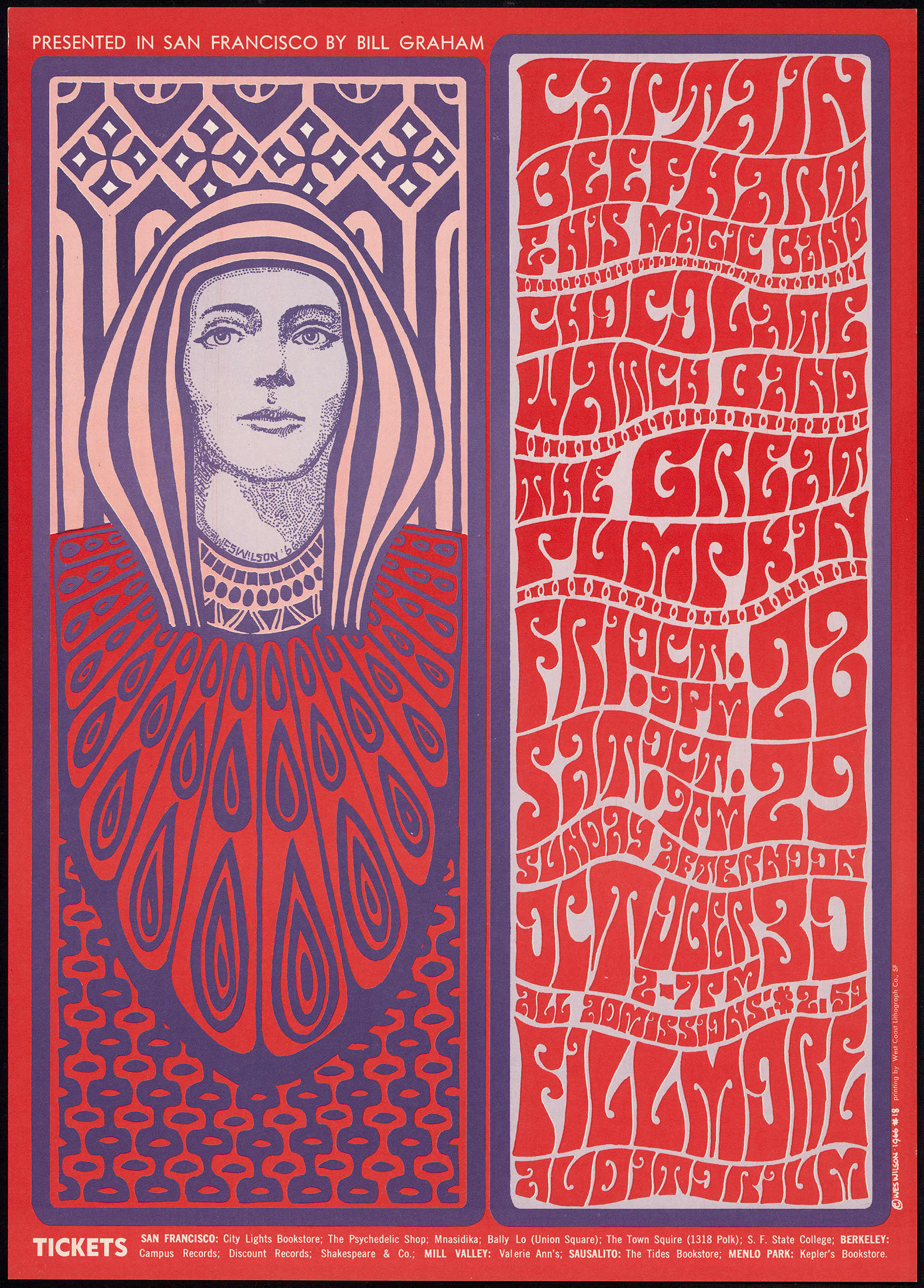

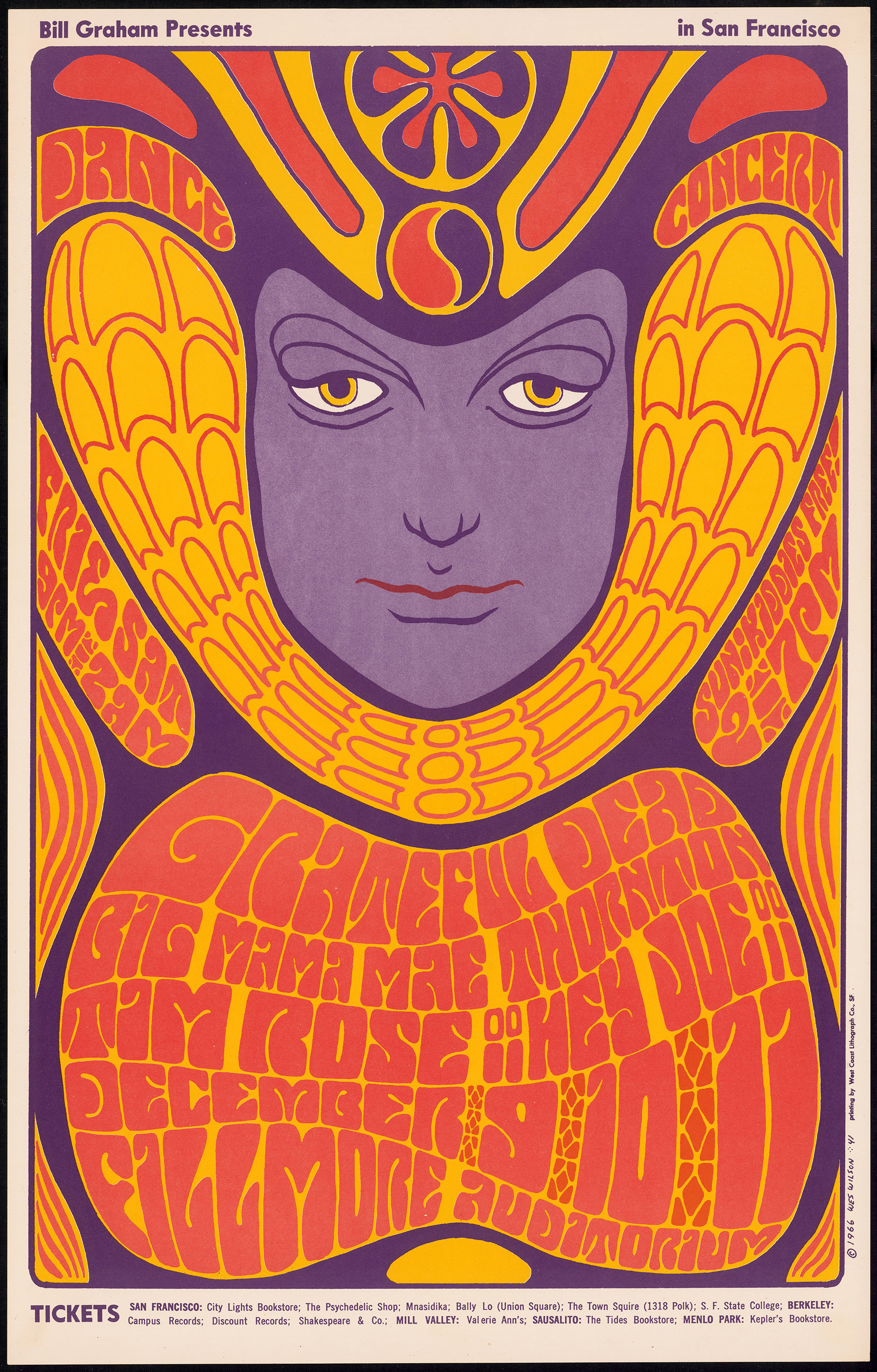

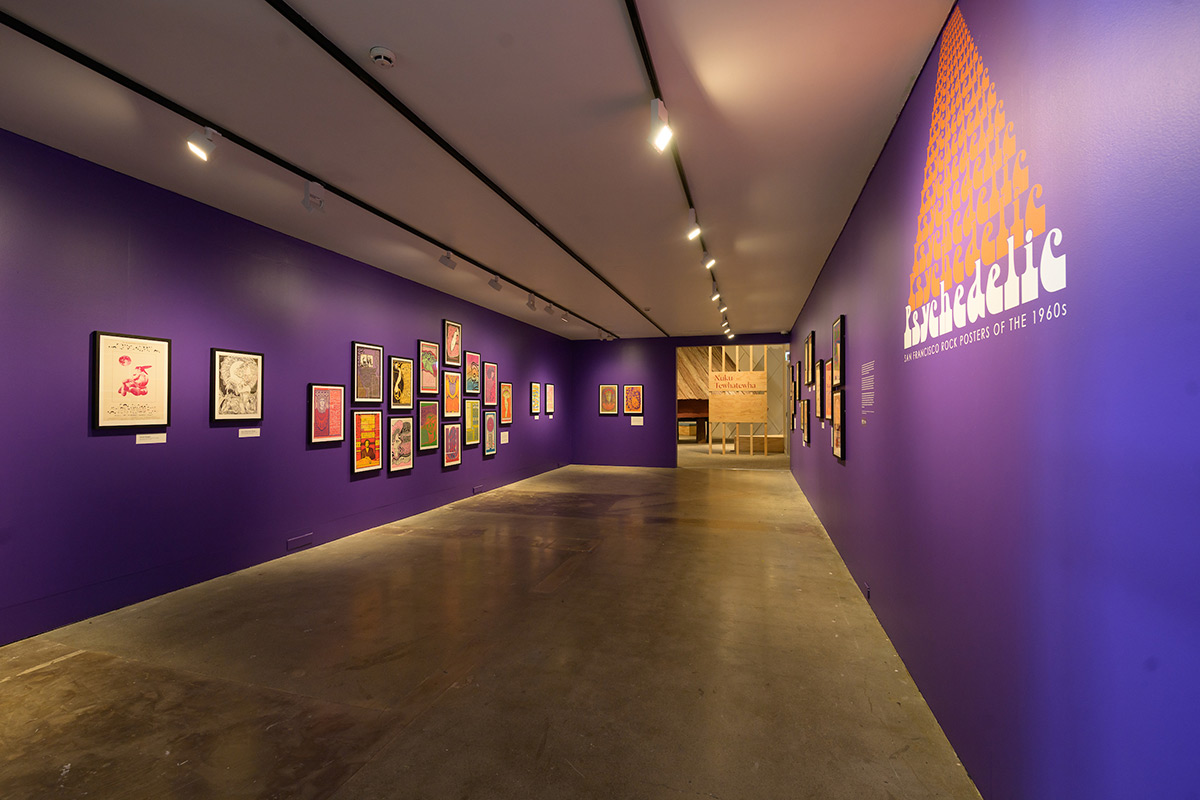

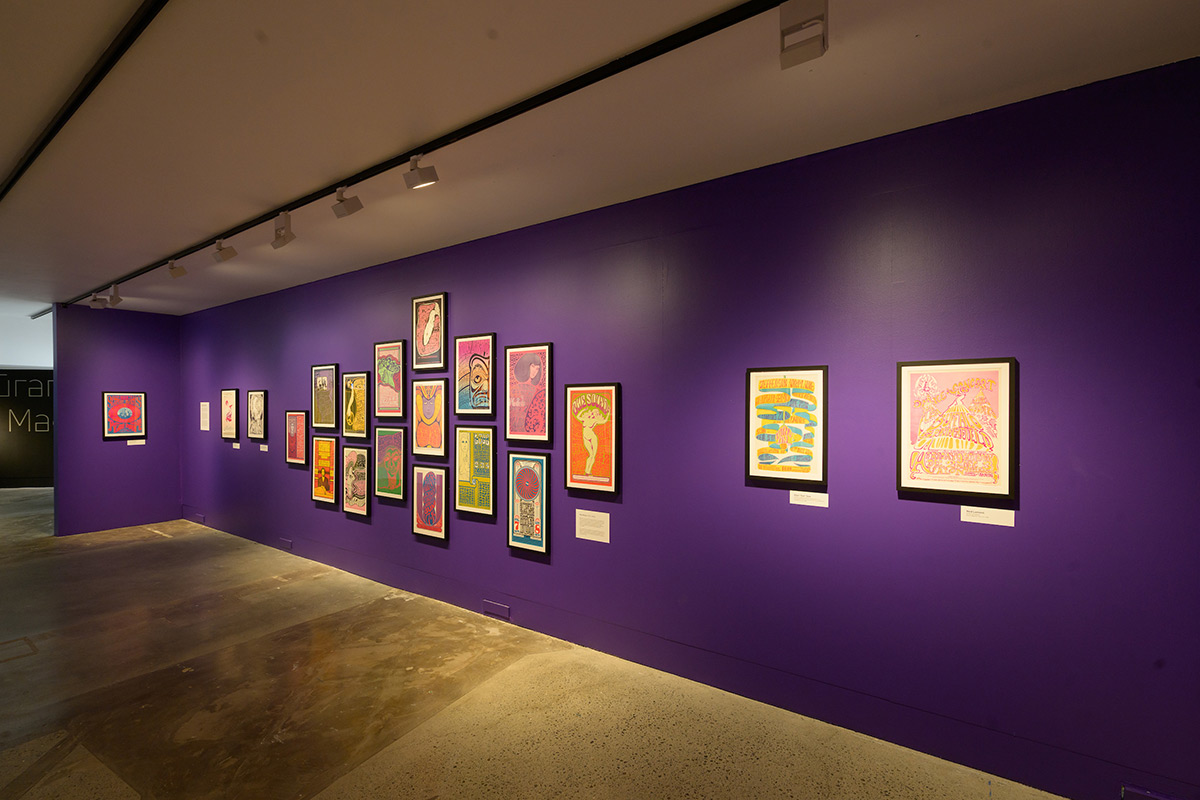
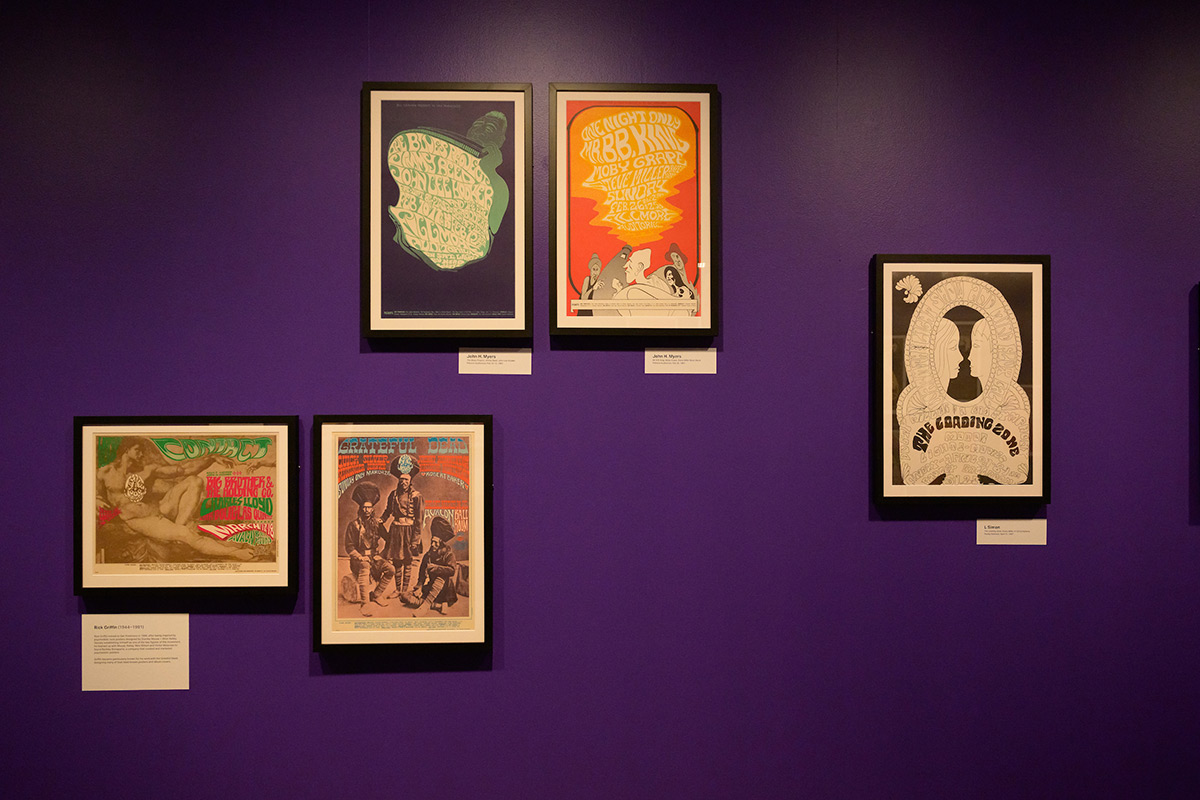
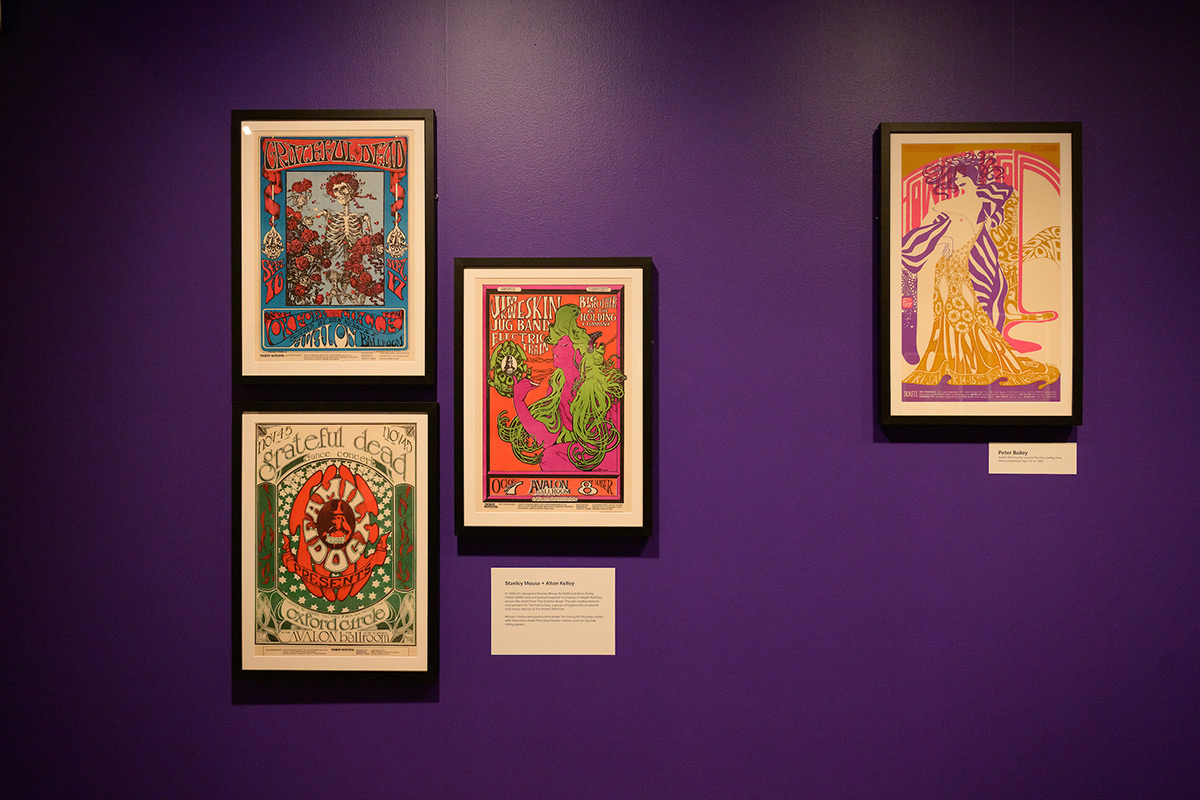

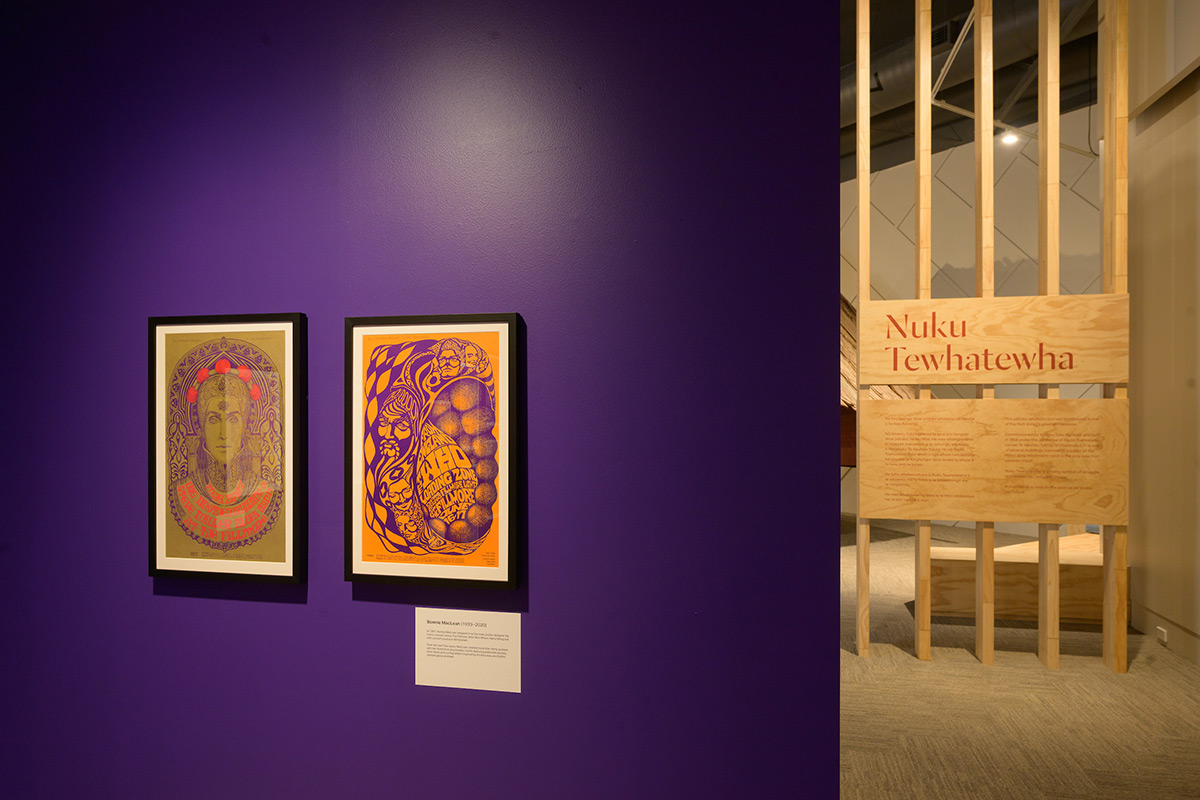
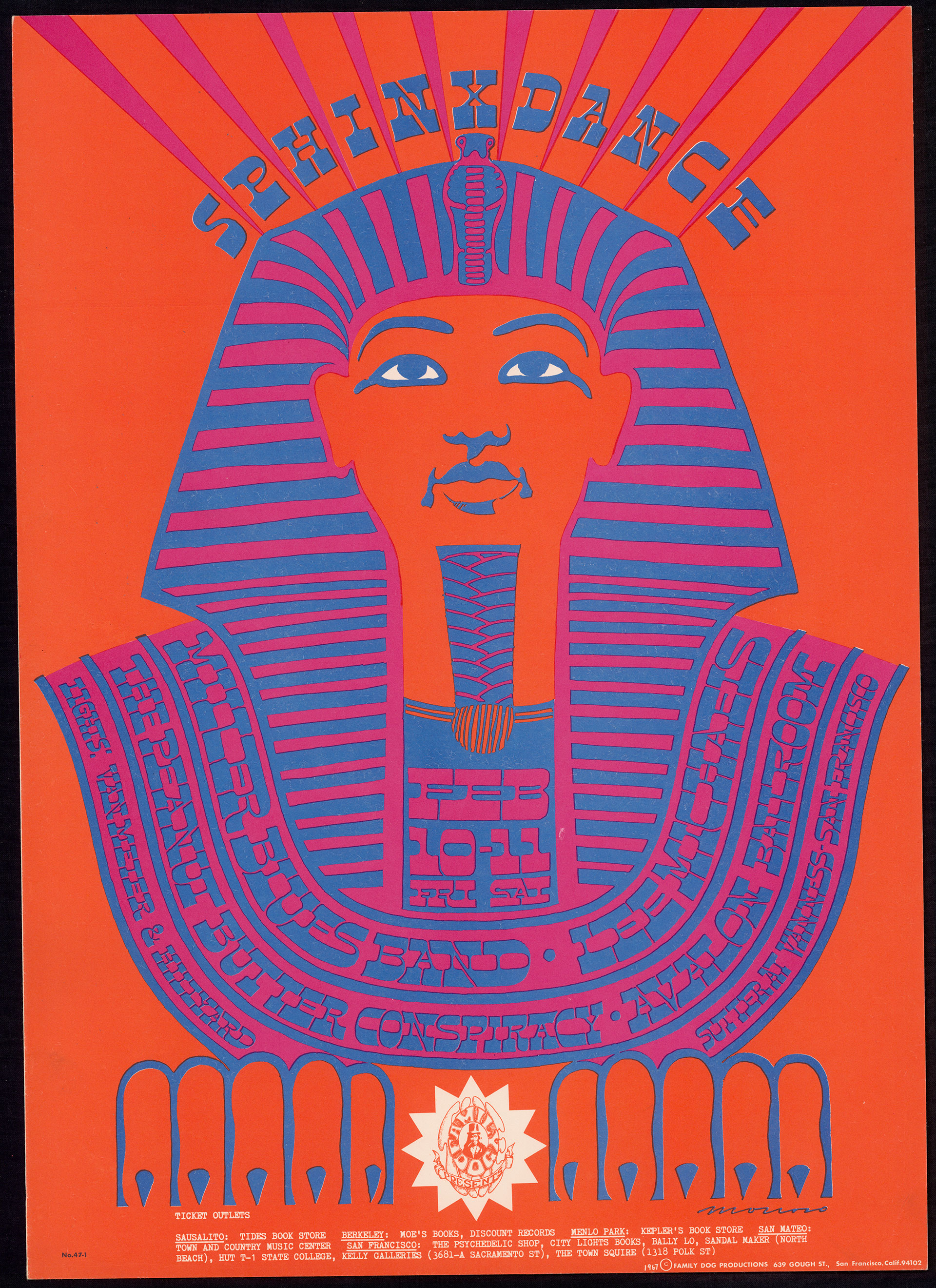
Victor Moscoso, Sphinx Dance: Miller Blues Band, Lee Mathews, The Peanut Butter Conspiracy- Feb 10-11, Avalon Ballroom, 1967. Collection of Massey University
In the mid-1960s, San Francisco was the heart of radical youth counterculture in the United States.
Dressed in flared trousers and floral tunics, the hippie generation flocked to the bohemian Haight-Ashbury district to reject ‘the Establishment’ in favor of an ideology of peace and love, sexual liberation, and experimentation with mind-altering drugs.
From this emerged a rock scene that took its inspiration from the effects of hallucinogenic drugs—producing influential bands, including The Grateful Dead, Jefferson Airplane, and Big Brother and the Holding Company (fronted by Janis Joplin). The posters that advertised their concerts at iconic venues, especially the Fillmore and Avalon Ballroom, were illustrated with a distinctive ‘psychedelic’ style that has become strongly associated with the era, characterized by bright colours, kaleidoscopic patterns, free-flowing lines, and hand-drawn type.
In 1965, Mike Fitzgerald arrived at the University of California, Berkeley on a Fulbright Scholarship to begin his PhD in zoology. For a young Kiwi scientist arriving in California for the first time, these eye-catching posters captured the spirit of this extraordinary time and place—something quite different from anything he’d seen at home in New Zealand. Although neither the rock concerts nor the drug scene held any appeal to the young scientist, he was fascinated by the unique design of the posters themselves and made a habit of collecting one whenever surplus posters were being handed out on campus. Little did Mike know that he was building a valuable collection of design history that represented some of the most important graphic artists of the day, including Wes Wilson, Stanley Mouse and Victor Moscoso.
After returning to New Zealand at the end of 1969, Mike married and settled in Stokes Valley with his wife Alice, where his collection of over 40 posters sat in a cupboard in their house for decades. Thought to be the only collection of its kind in Aotearoa, Mike and Alice gifted these important examples of design history to Massey University’s College of Creative Arts – Toi Rauwhārangi in 2010 as a reference and inspiration to a new generation of design students.
This exhibition was produced in partnership with Massey University, with the generous support of the US Embassy in New Zealand.